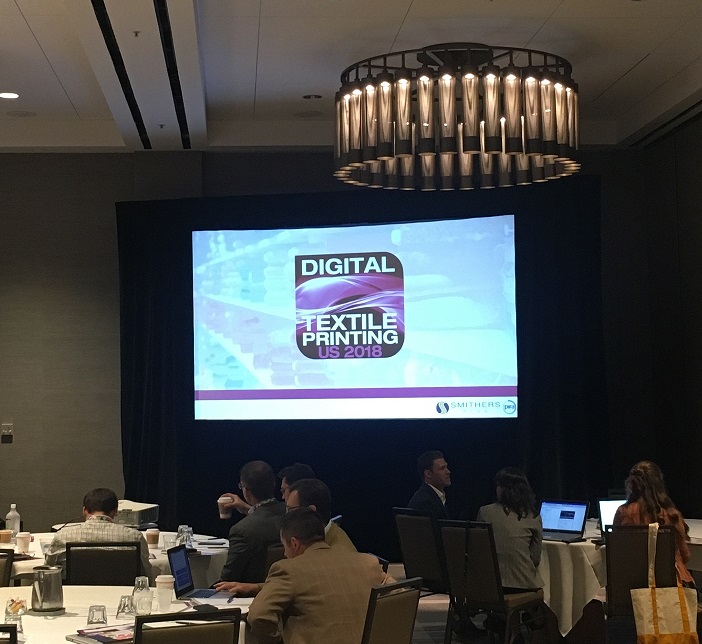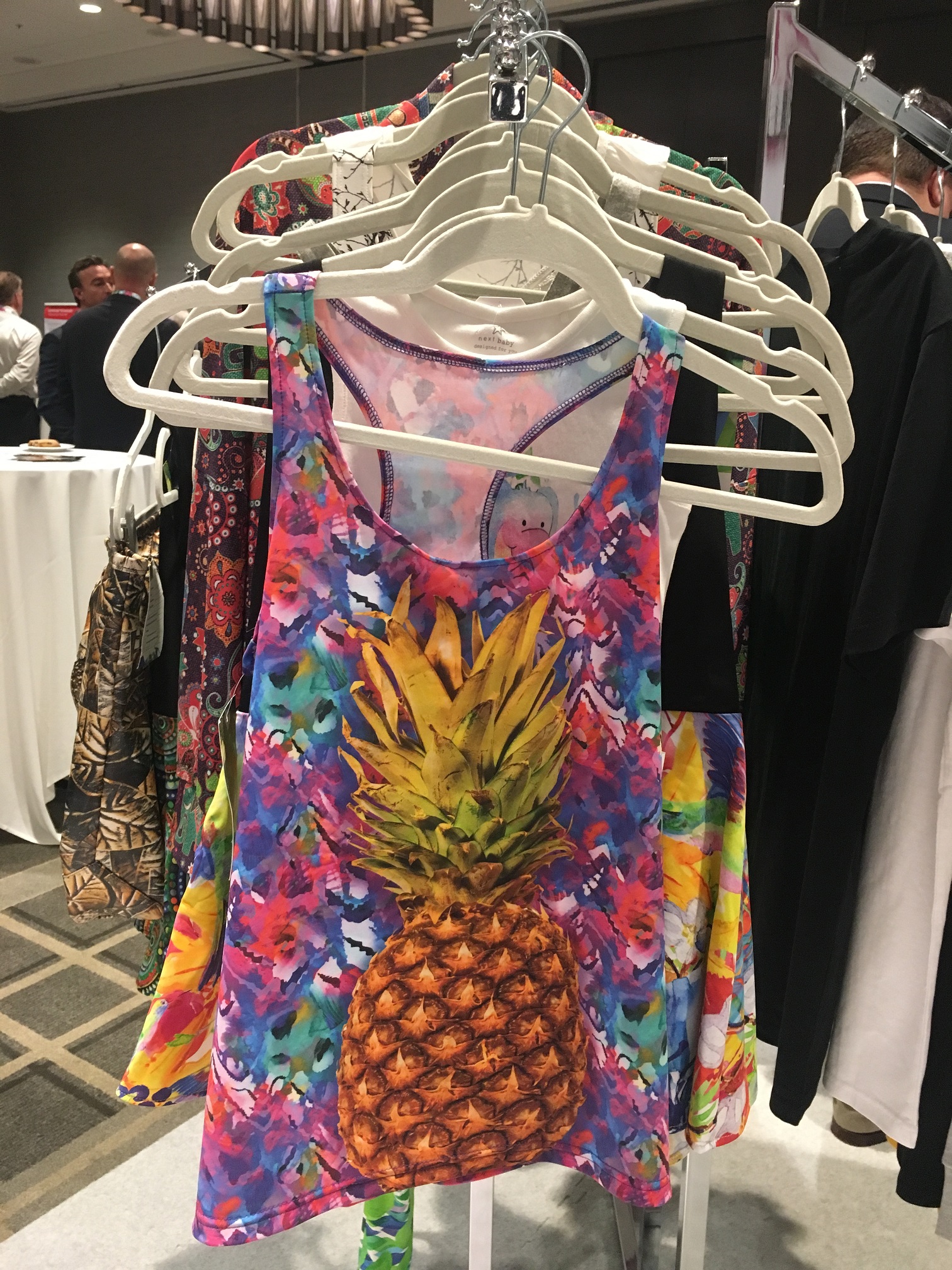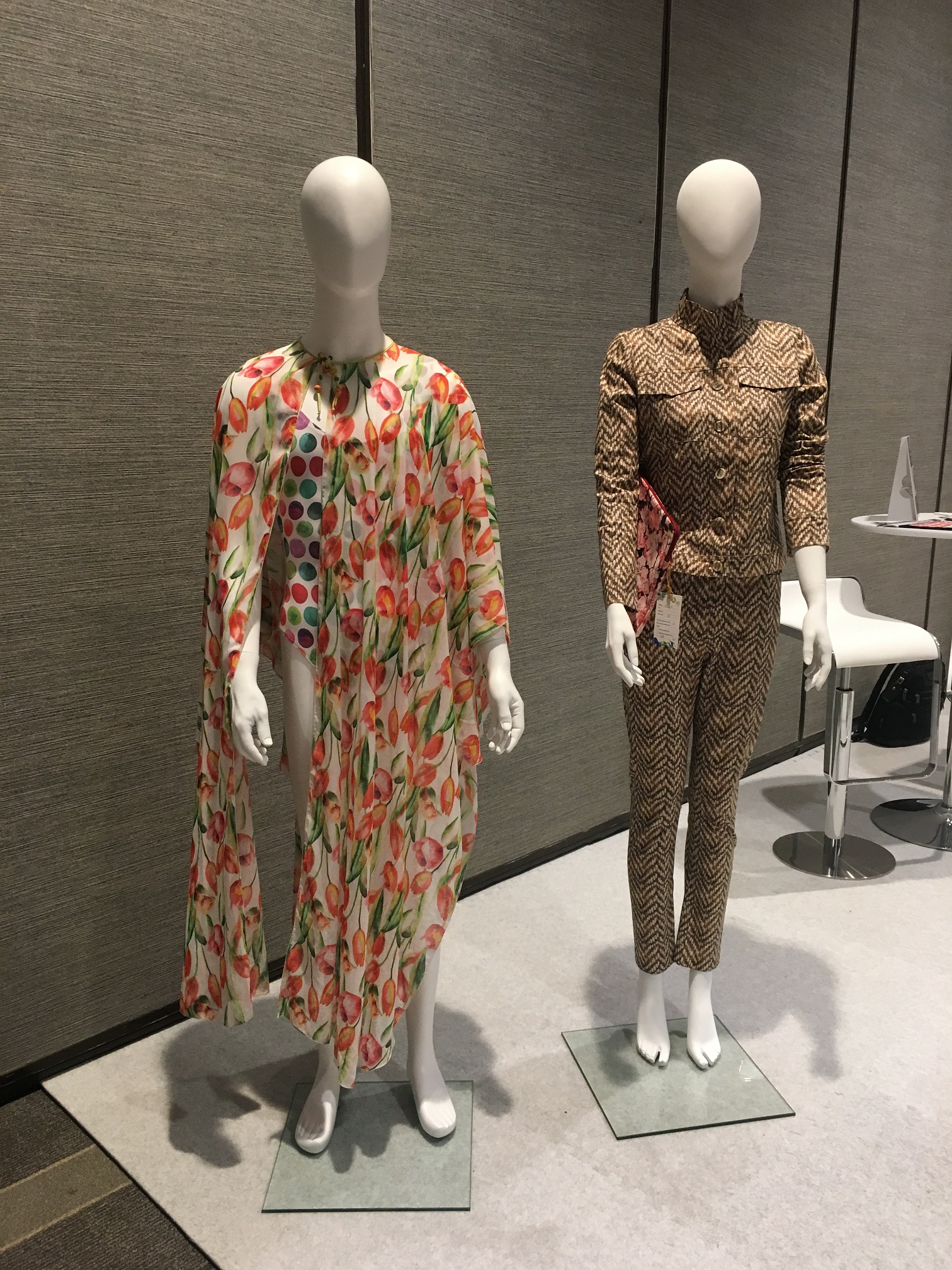There are many changes occurring in the digital print industry today, from innovative technology to new applications to a potential shift from brick and mortar to e-commerce. Are we ready to accept them? And what will we offer to stay ahead?
 Smithers Pira’s Digital Textile Printing US event, co-located with Digital Print for Packaging, was held in Schaumburg, Illinois, June 7-8, and addressed the movement in the market. Attendees included print shops, brand owners, manufacturers, and converters who are interested or involved in the digital textile printing industry.
Smithers Pira’s Digital Textile Printing US event, co-located with Digital Print for Packaging, was held in Schaumburg, Illinois, June 7-8, and addressed the movement in the market. Attendees included print shops, brand owners, manufacturers, and converters who are interested or involved in the digital textile printing industry.
Today, the main market segments in the digital print for textiles industry are clothing, soft signage/displays, household textiles, and technical textiles. Dr. Paul Ewing, associate consultant, Smithers Pira, shared that the market drivers for short-run textile print for apparel include the growth of fast fashion, the shift to e-commerce, and increased demand from consumers. He also mentioned the advantages of digitally printed soft signage: reusability, light weight, and flexibility (cost effective); premium look and feel; and improved environmental profile – all similar to the advantages of digitally printed packaging. “Print shops can easily expand their printing applications to soft signage through versatility by increasing the range of their applications, color consistency, and high image quality,” added Timothy Mitchell, HP latex application specialist.
While there are major drivers for the future growth of digital print for textiles, there are always challenges and caution, specifically on the sustainability and environmental concerns within the fashion industry as a whole. While sales of clothing is growing, the actual wearing of those clothes is decreasing. Consumers tend to purchase for one-time wear as opposed to a T-shirt that will last them a few seasons.
But the pros seem to be outweighing the cons. Tim Brule, VP of production engineering, Fanatics Branded, a one-stop shop for sports memorabilia, discussed the benefits and advancements of digital textile graphics, the must-haves for competing at the highest level of the constantly evolving retail market, and adapting to purchasing habits and consumers’ behavior, needs, and trends. Brule highlighted “micro moments” as a huge profit center. Micro moments are special events that can be translated to bankable memorabilia on products like T-shirts or posters: Think the underdog beating the number-one seed during March Madness.
So, what’s causing this supposed retail meltdown of 2018? We know consumers are still buying, but now they’re buying more online. So what do we do? Change from the supply-and-demand to demand-and-supply mentality. But the shorter the run, the less profit there is in conventional printing – another reason to make the switch to digital.
Advertisement
Online Presence
If the direction is moving toward e-commerce, how do you establish an online, on-demand digital textile printing business? Ryan Kurek, director of marketing, Kornit Digital, said it best: “Fashion is fluent, branding is constant.”
Michelle Francis, director and co-founder of Frankie and Swiss, an Australian textile printing company, says your website needs to be easy to use, responsive to desktop and mobile devices, and designed for both consumers and professionals. Francis said her business has no minimum orders; it’s all about custom personalized work and short runs with digital printing. However, “digitally printed textiles is still a niche workflow and isn’t fully understood by technology companies outside the textile industry,” she said. She suggests finding a partner with proven technology, and creating a website that isn’t intimidating to your clients.
Kirk Green, CEO and president of Ferrari Color and Signs.com and Big Picture Editorial Advisory Board member, also knows a thing or two about the power of online presence and digital textile printing. The print shop began fabric printing in 2006, and launched Signs.com in 2012: a user-friendly website with a variety of product options and informative blog posts.
“Build it and they will only come if they can find you,” was Green’s message during his session. So, how do customers find you? Through a custom market, personalized samples, marketing campaigns, an experienced sales team, client events, project portfolios, email showcases, an informative website, social media presence, and newsletters. “If you’re not on page one of a Google search, you don’t exist,” he said. “If you’re on page two or three, why even bother?” How much time and effort do you spend on your shop’s website?
Yet Gart Davis, CEO and co-founder, Spoonflower, said that e-commerce players are beginning a reverse migration to brick and mortar, and bringing their large data sets with them. “Many products have parallel physical and digital lives, enabling shopping experiences via AR.” Include connective print with your digitally printed textiles for a full-service offering to your client, and their customers.
Advertisement
“Pay a stupid amount of attention to the minnows, not always the whales,” he said, referring to the players in the digital textile industry. “The makers are the minnows that can grow into whales. Remember, your customer is often an entrepreneur.”


 Best of Wide Format2 months ago
Best of Wide Format2 months ago
 Columns2 months ago
Columns2 months ago
 Best of Wide Format2 months ago
Best of Wide Format2 months ago
 Blue Print2 weeks ago
Blue Print2 weeks ago
 Best of Wide Format2 months ago
Best of Wide Format2 months ago
 Best of Wide Format2 months ago
Best of Wide Format2 months ago
 Best of Wide Format2 months ago
Best of Wide Format2 months ago
 Best of Wide Format2 months ago
Best of Wide Format2 months ago















